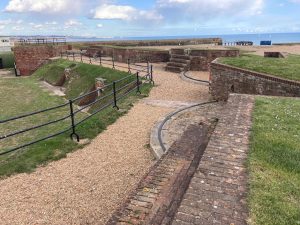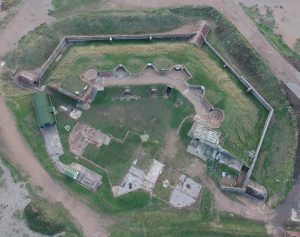December 2024
I’m scrambling through the woodland undergrowth, anxious, sweating and clutching a 2kg pouch of white powder and a spoon. I may look like some Colombian cocaine smuggler, but I’ve got the perfect excuse for the police: “I’m researching my parish magazine article”. I’ve been writing articles Sussex parish magazines for many years and I’ve received some lovely comments from many people – thank you. It’s nice to know they are being read and enjoyed.
When I was a kid, I would read loads of wildlife books with names like ‘the amateur naturalist’ (not to be confused with ‘the amateur naturist’, a mistake you only make once). Each book promised to make you a wildlife detective and was filled with tips on tracking mammals in the countryside. Most British mammals are nocturnal and, after centuries of persecution, all of them are understandably rather wary of humans. We hardly ever see them. Yet these invisible animals leave behind tantalising clues which let us know they really exist: droppings, nibbled nuts, pellets. But the biggest giveaway of all are their footprints.
Primitive mammals (such as Hedgehogs, Stoats, Badgers and you) are plantigrades. We stroll about on the soles of our feet and have five toes. When we run, we use our toes and the balls of our feet. For the mammals who spend a lot of time running and jumping this basic mammalian plantigrade foot has evolved and adapted over time. Some animals have lost a toe (Foxes, cats, dogs, Hares) while the real gymnasts, such as deer, leap around on two toes, and horses race on just one toe enclosed in a hoof. Like Sherlock Holmes with a foot fetish, you can examine each footprint’s formula of toes, claws and pads to deduce just who has been sneaking around at night.
My books told me that, once you find a footprint, the best way to capture it is to make a cast – which explains why I’m crouched here in the undergrowth excitedly mixing up plaster of Paris powder and pouring it into a footprint in the muddy woodland floor. I’ve always wanted to do this since I was a kid but, well, I guess life got in the way. Now, sat proudly on my desk, I have my first footprint cast: a Badger (with five toes, a wide pad and obvious claws). And somewhere out there is a Badger completely unaware that its footprint has created a deeper enjoyment of wildlife and inspired someone to preserve it. Which now I think about it, is all I have hoped for from these articles too. I hope I’ve made an impression.
Wishing you all a Merry Christmas and best wishes for 2025.
Parish Magazine article kindly provided by Sussex Wildlife Trust. Author not named.


